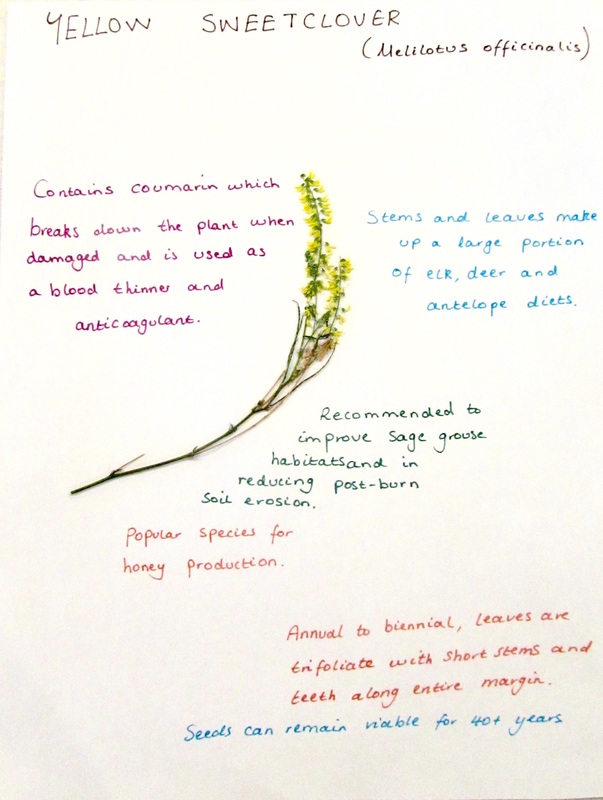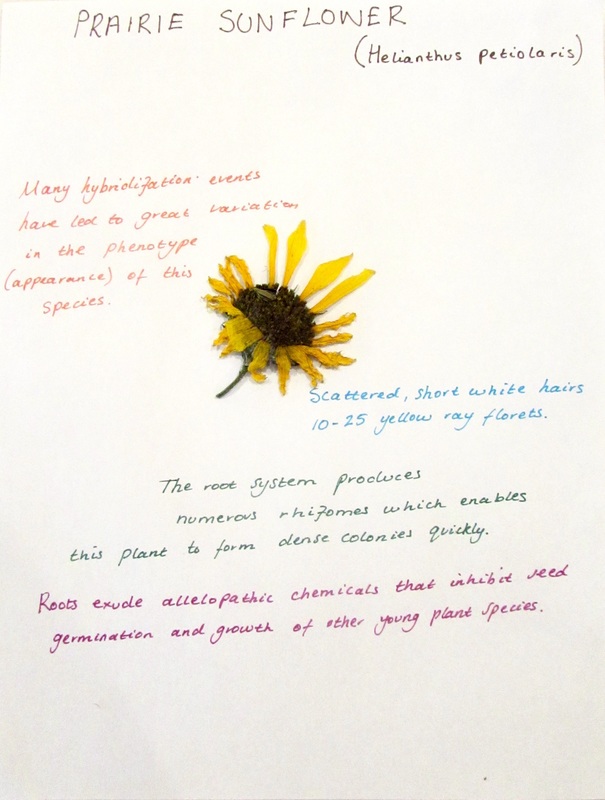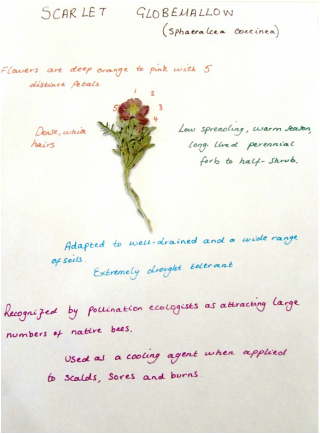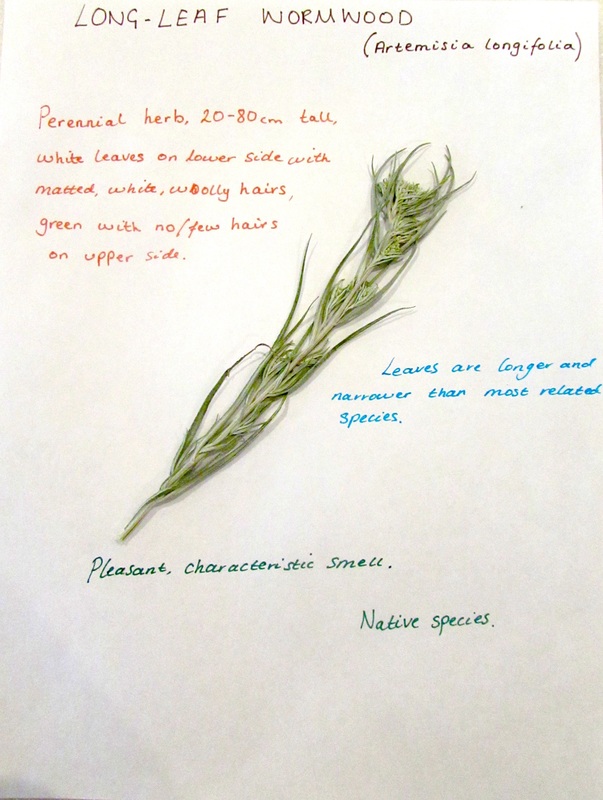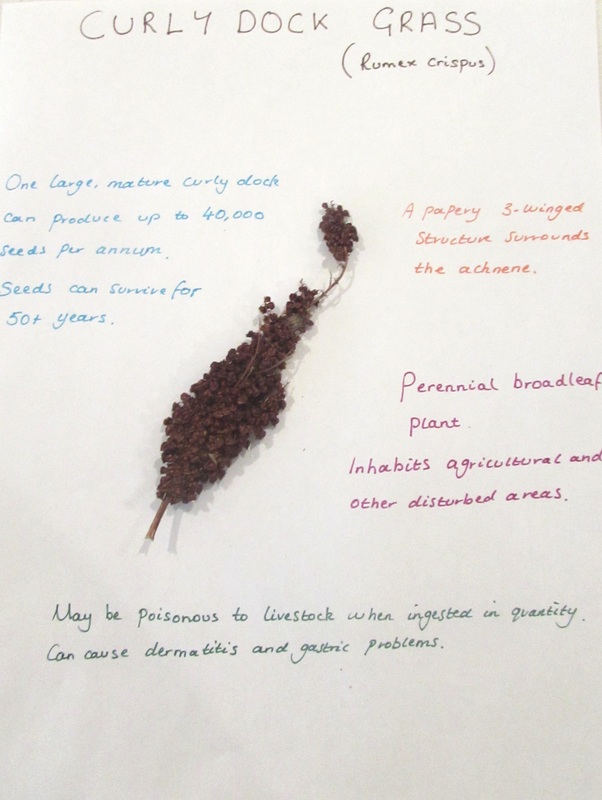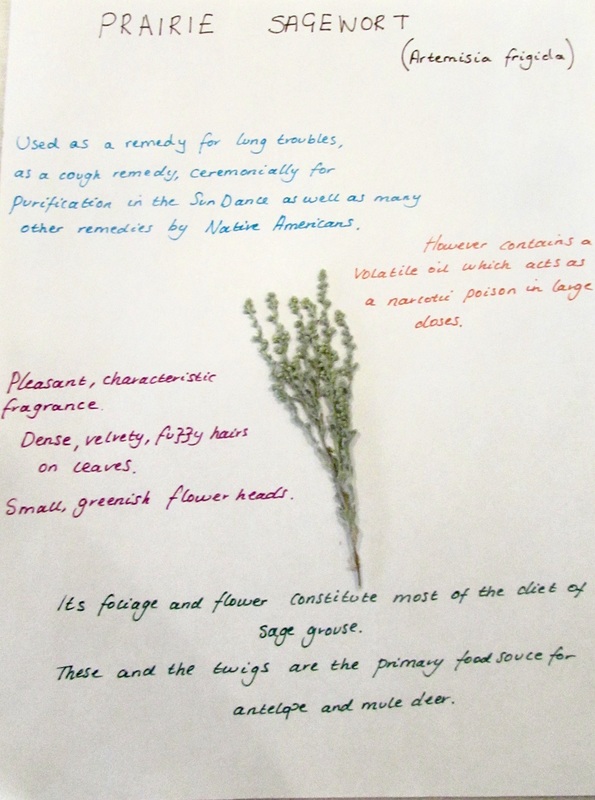By Josiane Segar
ASC Landmark Crew Member
ASC Landmark Crew Member
The term “grass” is largely misunderstood.
More often than not, it conjures an image of a neatly mowed patch of lawn. But the mixed-grass prairie in northeast Montana is so much more diverse than this: One of the world’s largest and least protected ecosystems, it has the capacity to support an exceptional diversity of animals.
The primary objective of ASC’s Landmark project is wildlife research. We hike transects to observe and collect data on pronghorn, bison and other local fauna, we map prairie dog towns, and we do camera trapping to study how wildlife interact with fences.
But to understand the bigger picture of our work, we must look closely at the grassland ecosystem itself.
I created these notated, pressed flower pieces in an effort to capture the Great Plains, one species at a time.
To be able to name something is the first step toward comprehending it. I found that once I had a grasp on basic plant identification, I could begin to mentally tackle the new, vast expanse of the prairie during my time here.
To be able to name something is the first step toward comprehending it. I found that once I had a grasp on basic plant identification, I could begin to mentally tackle the new, vast expanse of the prairie during my time here.

